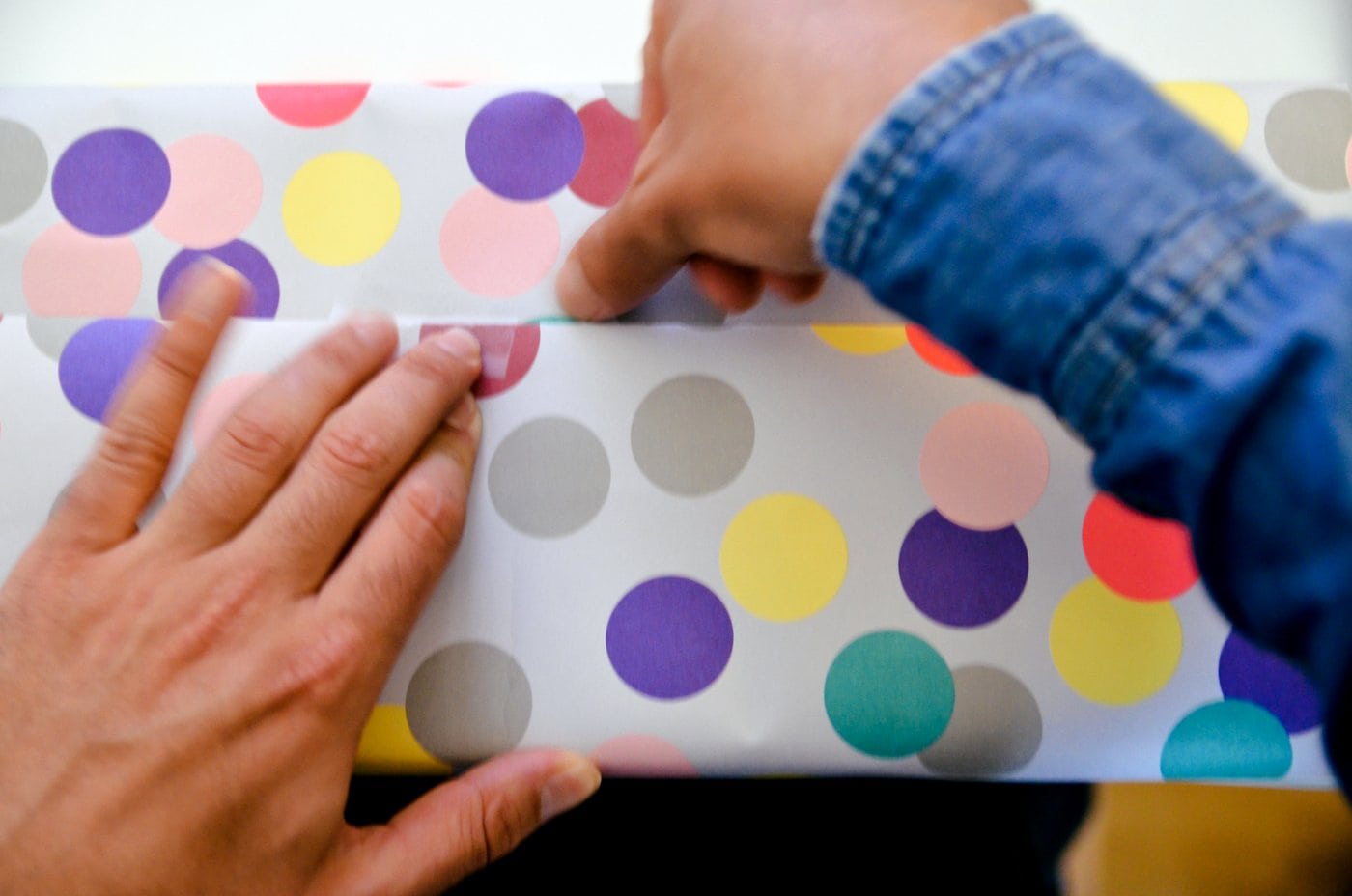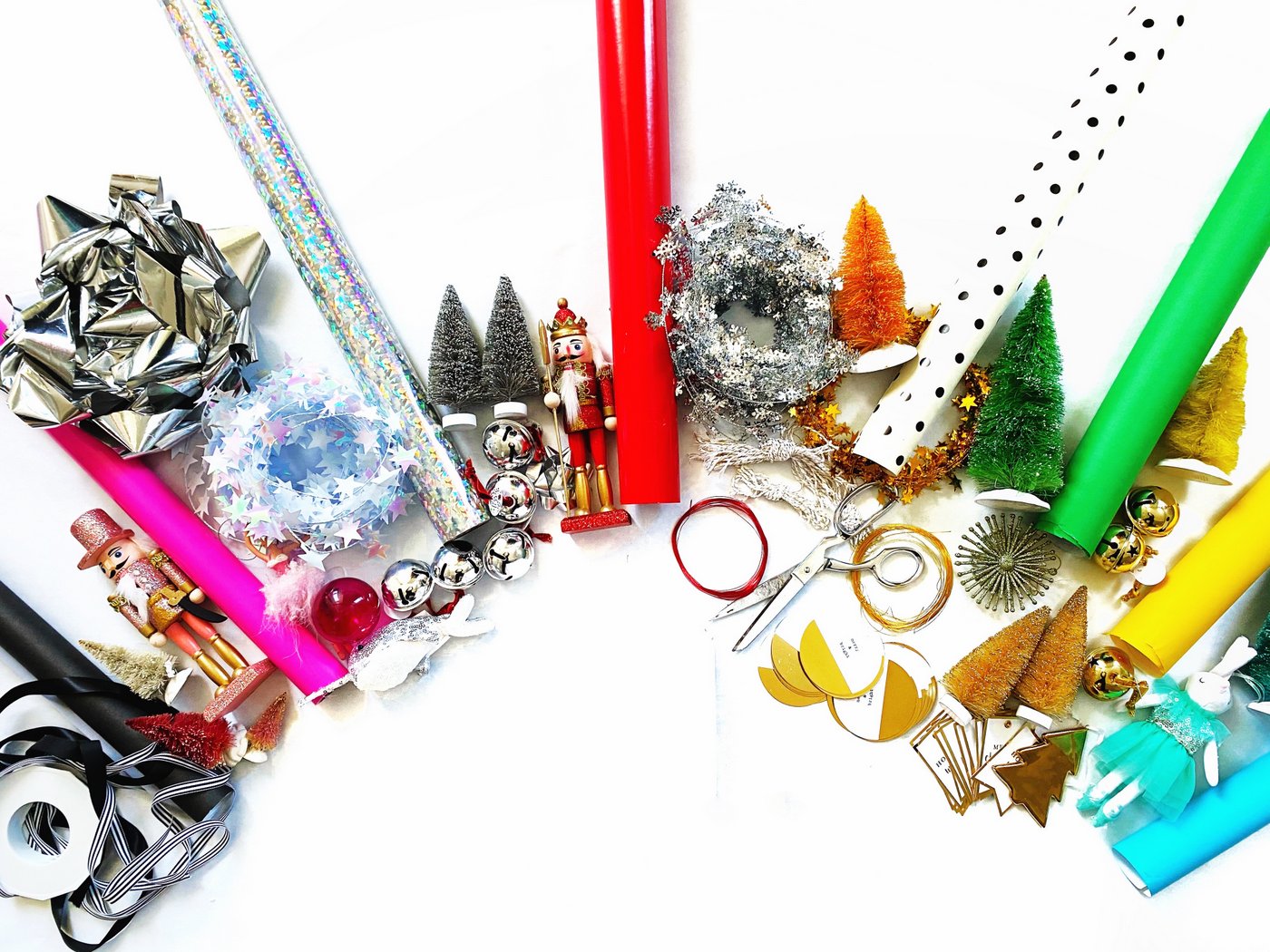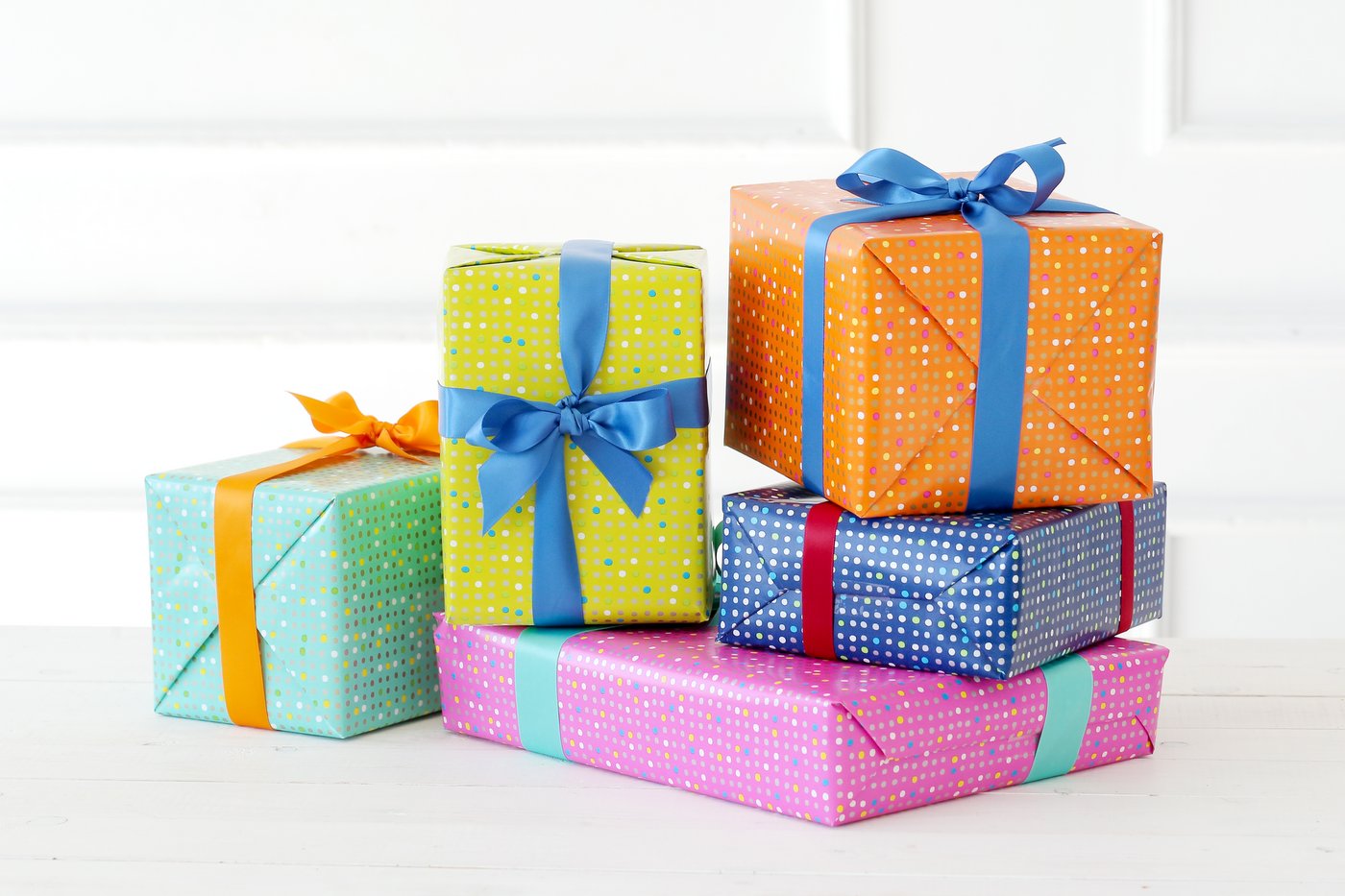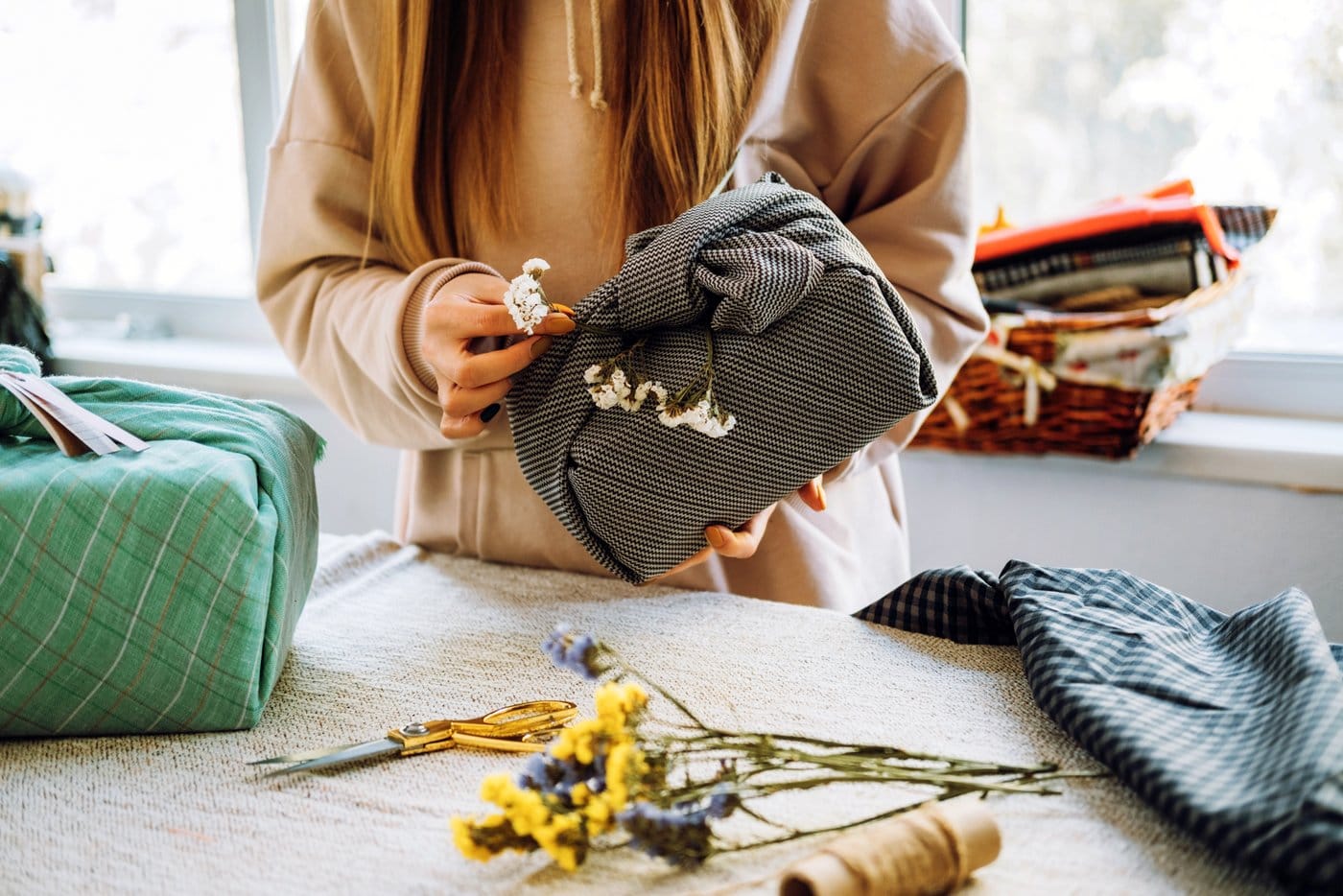Does the idea of being surrounded by shiny paper, gift boxes and bows — and stacks of presents to be wrapped — sound more like paradise or a punishment?
In surveys commissioned by Scotch brand tapes, adults “rapped” about their own personal gift-wrapping practices, and even revealed what some of them would do to get out of wrapping holiday presents.
Below are some findings from Scotch surveys conducted in 2003 and 2009, when people talked about how they handled presents for Christmas, birthdays and other holidays and celebrations.
When do you wrap – and how? Gift wrapping survey results
1. Love it or leave it? Nearly 70 percent of Americans say they enjoy wrapping gifts. However, others admit that holiday gift wrapping is worse than cleaning the house (19 percent), washing the dishes (14 percent), shoveling snow (11 percent), or taking out the trash (10 percent).*
2. Planning ahead: One in four people wrap their holiday gifts one or two days before giving the gift (27 percent). Another 22 percent wrap three to six days before the gift giving occasion.
3. Nighttime is the right time: More than half of Americans (57 percent) prefer to wrap their holiday gifts during the evening.*
4. Wrap-time entertainment: While wrapping holiday gifts, people like to watch a TV show (49 percent), listen to holiday music (41 percent) or listen to the radio (32 percent).*
5. Getting that holiday cheer: More than one out of four people (28 percent) say that wrapping presents puts them more in the “holiday spirit” than shopping does.*

6. All buy myself: When it comes to wrapping holiday presents, nearly three in four adults (71 percent) are most likely to purchase gift wrap supplies and wrap the goodies themselves, while one in five (19 percent) will put items in a gift bag instead of dealing with the wrap. Just three percent said they will have gifts professionally wrapped at a store.
7. Supplies & know-how: Nearly a quarter of adults surveyed (24 percent) list not having the right supplies on hand as the most common gift-wrapping mistake, second only to not knowing how best to wrap the gift (32 percent). Twenty percent cite wrapping with too little paper as the culprit, while another twenty percent say using too much paper is the big mistake.
8. That’s too lumpy: One out of six people (17 percent) admit to not purchasing a particular gift because it looked too difficult to wrap. In fact, nearly half of Americans (47 percent) say that wrapping an odd-shaped item is a hassle. When faced with wrapping such a gift, one-quarter (26 percent) of people say they wrap it as best they can, even though they know it will look ugly. Half of Americans (49 percent) don’t even attempt to wrap an odd-shaped item — they either leave it unwrapped, or simply put a bow on it.*
9. Clear the table: Food isn’t the only thing being served up in the kitchen — nearly 35 percent of Americans wrap their gifts on the kitchen or dining room table. Other popular spots for wrapping presents include the living room (33 percent) and bedroom (27 percent).*
10. Recycling rocks: Just over half of the adults surveyed (53 percent) have saved and re-used gift wrapping paper, with women (61 percent) more likely than men (44 percent) to recycle used gift wrap.
11. Other options: When wrapping paper runs out, six percent of the population admits to leaving the present unwrapped! However, the majority of people will find an appropriate substitute. Sixty-five percent say that they put the item in a gift bag, while 41 percent use newspaper or comics to wrap the gift. Other items used in the absence of wrapping paper include tissue paper (31 percent), paper or plastic bags (11 percent), and tin foil (13 percent).*

Battle of the sexes: Men vs women
- Nearly three in four adults (71 percent) believe that women are better gift wrappers than men, based on the overall appearance of the gift.
- Nearly three in four adults (74 percent) say that the female head of household is most likely to wrap the majority of holiday gifts in their home, while just 19 percent say the male head of household wraps the majority of the gifts.
- When asked what they would be most likely to give their spouse or significant other in return for wrapping all the holiday gifts, men say that they would buy them an extra gift (33 percent), watch the latest chick flick or action movie (18 percent), or take out the trash for a week (nine percent). Half of women (49 percent) claim “it wouldn’t matter because they would never agree to it.”
- While the average number of presents wrapped by adults in a typical December holiday season is about 15 (15.3), women wrap an average of 10 more gifts than men (20.3 women, 9.9 men).
* These results come from Scotch tape’s 2003 survey, while the remainder of the responses are from 2009.

To gift wrap, or not to gift wrap? That is the holiday question
You might want to think twice before giving unwrapped gifts on Christmas, birthdays and other holidays, according to actual scientific research on the etiquette of wrapping.
Elizabeth Porublev from Victoria University in Melbourne, Australia, completed her PhD on how wrapping is used, or not used, and what it says about the status of a relationship and the gift giver.
To gift wrap, or not to gift wrap?
In her 2011 study, “Unwrapping the relevance of gift wrapping,” she identified three types of gift-wrappers: passionate wrappers, conventional wrappers and detached wrappers.
“Passionate wrappers believe gift wrapping is highly relevant to gift giving,” she says. “They believe they are more than capable of wrapping a gift, and will often take risks with gift wrapping techniques and styles as a source of personal creativity.” This type does it more for themselves as a form of creative expression than for the receiver.
The conventional wrappers may have less flair, but respect gift wrapping as a social norm. “These people believe gift wrapping contributes to social bonds between the giver and receiver,” she says. “They wrap because it is expected and as receivers, they like to receive gifts that are wrapped.”
But the third group, detached wrappers, feels gift wrapping is of limited relevance, and only bow to pressure on special occasions. “They will only wrap gifts when they feel it is required, and are the most likely to outsource gift wrapping to a third party,” says Porublev.
Poor awareness of gift-wrapping norms meant detached wrappers were often judged for falling outside acceptable standards by the other groups — but not as much as non-wrappers, who were socially unacceptable by choice.

“People have come to expect that a gift should be wrapped,” she said. “A naked gift can indicate the low worth of relationship or that the giver has an unwillingness to personally invest in the gift.”
Ms Porublev said whatever you decided to do, it was important recognize the power of wrapping.
“Just as we remove price tags to remove all commercial aspects of the gifts, so wrapping extends that process of turning a commodity into something sacred,” she said.
As the first part of the gift to be seen, wrapping can set the mood for a gift and also heighten the element of surprise and drama of the event, she said.
Gift wrapping in its present form emerged in 1917, when the Hallmark Brothers, in their Kansas City store, ran out of tissue paper and began offering envelope liners to wrap Christmas gifts. According to Hallmark, the worldwide retail gift wrap industry is now worth more than $2.9 billion a year.
Ms Porublev’s interest in gift giving and gift wrapping started with a year-long stay in Japan, where she said gifts are presented beautifully — some with several layers representing different blessings on the gift.








